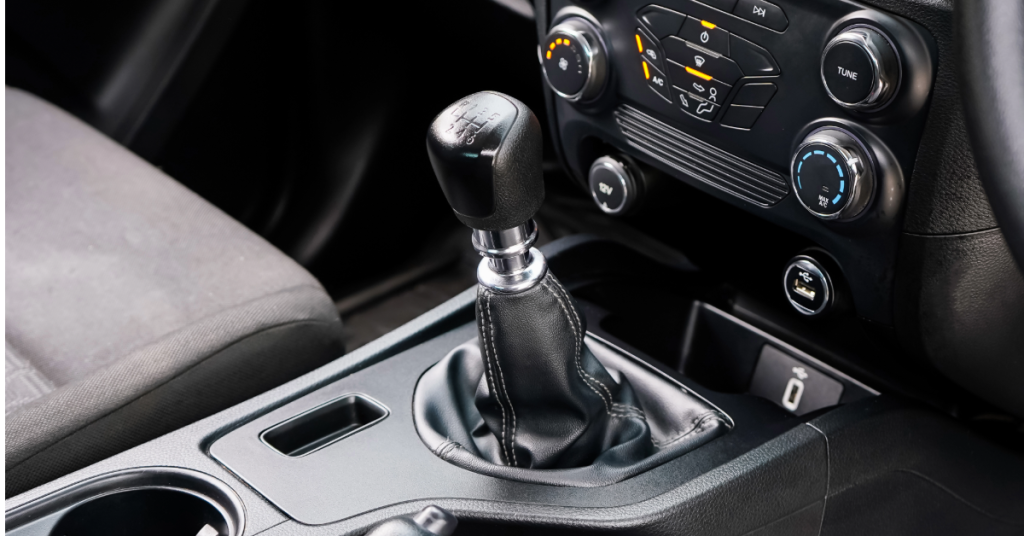Key Takeaways
- AWD systems provide continuous power to all wheels for improved traction and are ideal for urban driving and light off-road conditions, while 4WD systems engage all wheels when needed and are tailored for rugged terrains.
- Choosing between AWD and 4WD depends on driving habits; AWD suits daily commuters facing diverse weather or road conditions, while 4WD is preferred for off-road enthusiasts and challenging terrains.
- Both AWD and 4WD vehicles often come with higher costs and lower fuel efficiency compared to two-wheel drive options, and recent innovations are enhancing their performance and efficiency across electric and hybrid models.
Understanding AWD and 4WD Systems
AWD and 4WD systems, while often used interchangeably, serve distinct purposes and operate differently. AWD systems provide continuous power to all wheels, enhancing traction on slippery surfaces automatically. On the other hand, 4WD systems typically engage power to all wheels only when needed, either manually or automatically. We will explore how these systems function and highlight recent innovations that enhance their efficiency and user-friendliness.
Recent advancements have significantly improved both AWD and 4WD systems. Modern AWD vehicles can distribute power to wheels with better traction, enhancing stability and control. These systems use technologies like predictive algorithms to optimize torque distribution.
Traditional 4WD systems require manual engagement but excel in off-road conditions, giving drivers control over when to use four-wheel drive.
How AWD Systems Work
AWD systems typically utilize a center differential to manage torque distribution between the front and rear axles. This allows the wheels to turn at varying speeds, which is particularly useful during everyday driving when navigating corners or slippery surfaces. AWD vehicles adjust power distribution to the wheels with better grip, enhancing control in slippery conditions.
The continuous traction from AWD systems is advantageous in urban environments and light off-roading scenarios. Designed to operate seamlessly without driver intervention, these systems are ideal for those who encounter diverse road conditions regularly.
The latest all wheel drive systems can adjust power distribution based on real-time road conditions, further improving drivability and safety.
How 4WD Systems Work
Four-wheel drive (4WD) systems are designed to provide power to all four wheels for improved traction, with two main types: part-time and full-time. Full-time 4WD systems operate in four-wheel drive mode at all times, providing constant traction to all wheels. On the other hand, 4WD systems operate primarily in two-wheel drive mode, engaging four-wheel drive only when additional traction is required.
4WD systems utilize a transfer case, which functions like a locked differential, to distribute power equally to all wheels as needed. This is particularly useful for off-roading, where locked axles and low-range gearing can handle challenging terrains like mud and rocks more effectively.
These systems allow drivers to manually switch between a two wheel drive vehicle and four-wheel drive modes, offering better control in demanding conditions.
When to Choose AWD vs 4WD
The choice between AWD and 4WD largely depends on your primary driving scenarios. AWD systems offer continuous traction, making them better suited for urban driving and inclement weather. They enhance stability and control on various road surfaces, ideal for daily commutes.
In contrast, 4WD offers more control for rugged terrain, making it the preferred choice for off-road situations. Consider your driving habits and the environments you frequent. If you mostly drive on paved roads and occasionally face adverse weather, AWD might be better.
If you enjoy off-roading or live in an area with challenging terrains, 4WD offers the robustness and control you need.
Everyday Driving
For everyday driving, AWD vehicles provide better traction on diverse surfaces, enhancing stability and control during daily commutes. These systems are particularly beneficial for urban commuting as they provide enhanced traction on various road surfaces, including wet pavement or light snow. AWD can be categorized into full-time systems, which power all wheels constantly, and part-time systems, which primarily operate in two-wheel drive until additional traction is needed.
AWD system adjusts power distribution to the wheels with better grip, ideal for drivers who encounter varying road conditions. This traction improves stability, allowing safe travel regardless of the surface.
For those who don’t off-road but need a reliable vehicle for everyday use, AWD systems are practical.
Off-Roading
When it comes to off-roading, 4WD systems are specifically designed to handle challenging terrains, delivering superior traction and torque on surfaces like mud and rocks. Equipped with locked axles and low-range gearing, these systems tackle steep inclines and rough terrains more effectively than AWD. For off-road enthusiasts, 4WD offers the necessary robustness and control.
At Stevens Creek Chrysler Jeep Dodge, for example, many off-road capable vehicles are equipped with part-time 4WD systems that can be manually engaged for tough terrains. These vehicles are built to withstand the rigors of off-road driving, making them ideal for adventurous drivers who frequently venture off the beaten path.
Weather Conditions
In various weather conditions, AWD and 4WD systems perform differently. AWD is more effective in light snow, providing better traction for everyday driving. Conversely, 4WD systems, which primarily operate in two-wheel drive and engage all four wheels through a transfer case when needed, excel in deep snow and off-road environments.
Safety Considerations
Safety is a paramount concern for any driver, and both AWD and 4WD systems offer significant benefits in this regard. Vehicles with these systems offer better traction and stability, making them safer than two-wheel drive vehicles. Recent enhancements in AWD and 4WD systems improve efficiency, performance, and adaptability to diverse driving conditions.
In severe winter weather, 4WD vehicles offer better traction on snow and ice compared to AWD, which is better suited for everyday winter driving. AWD variably distributes torque to each axle without driver input, enhancing safety in harsh weather conditions like snow or rain, while 4WD excels in off-road scenarios with deep mud or sand.
Choosing between AWD and 4WD should consider the specific safety needs based on driving environments.
Traction Control
AWD vehicles adjust power to the wheels, improving traction on wet or snowy roads. In urban environments, these vehicles provide constant traction on all wheels, crucial for handling wet conditions effectively. This adjustment enhances stability and control, especially in slippery conditions.
The center differential in AWD systems allows for differing wheel speeds between the front and rear axles, essential for maintaining grip on wet surfaces. This feature enhances traction and stability, particularly in slippery conditions such as rain or snow. For drivers who frequently encounter such conditions, AWD systems offer a reliable solution for maintaining control and safety.
Driver Behavior
Despite the advantages of AWD and 4WD, safe driving practices and road awareness are critical for overall safety. While these systems enhance grip and stability, drivers must engage in responsible driving to maximize safety. Understanding your vehicle’s drivetrain limitations and capabilities can help you make better driving decisions in various conditions.
The effectiveness of AWD and 4WD systems is significantly influenced by road conditions, such as whether they are wet, icy, or uneven. Driver choices and reactions in different road conditions heavily influence overall vehicle safety, regardless of the drivetrain system.
Educating yourself on handling your vehicle in various scenarios ensures safer and more secure travel.
Cost and Fuel Efficiency
Both AWD and 4WD systems tend to increase the purchase price of a vehicle due to the additional equipment required. AWD vehicles typically have higher upfront costs compared to standard two-wheel drive models due to their system complexity. The market is also seeing a rise in hybrid vehicles equipped with AWD capabilities, offering both efficiency and enhanced traction.
Both AWD and 4WD systems can negatively affect fuel efficiency. AWD systems typically result in higher fuel costs compared to two-wheel drive due to continuous power distribution to all wheels. Similarly, full-time 4WD vehicles commonly experience greater fuel consumption due to the constant use of all four wheels.
Understanding the cost implications of these systems is crucial for making an informed decision.
Initial Costs
AWD is often an optional feature and can significantly raise the vehicle’s overall cost. The price difference between AWD and two-wheel drive varies, but AWD systems generally increase the vehicle’s cost significantly due to additional components. Similar to AWD, 4WD also generally adds to the base price of a vehicle, making it more expensive than two-wheel drive models.
The price difference for AWD and 4WD systems compared to two-wheel drive can be significant, reflecting the additional engineering and components involved. When considering a new vehicle, factor in these initial costs to determine which option fits your budget and needs.
Fuel Consumption
AWD systems can negatively affect fuel efficiency, typically leading to higher fuel costs compared to two-wheel drive counterparts. Models like the Subaru Outback demonstrate how AWD configurations can vary in fuel economy. Vehicles equipped with full-time 4WD commonly experience greater fuel consumption due to the constant use of all four wheels.
For instance, models like the Mitsubishi Pajero Sport illustrate the significant fuel economy impacts associated with 4WD systems. When choosing between AWD and 4WD, consider the long-term fuel costs and how they align with your driving habits and budget.
Towing Capabilities
Torque is critical in determining a vehicle’s towing capabilities. For larger towing loads, vehicles should ideally have torque ratings between 400 Nm and 500 Nm. Certain AWD and 4WD vehicles are preferred for towing due to their performance and capabilities, especially for boats, trailers, or caravans.
When choosing a vehicle for towing, consider its torque capabilities and how it manages power distribution. Both AWD and 4WD systems can enhance a vehicle’s towing performance, but specific requirements depend on the weight and type of load.
Torque Requirements
For effective towing, a torque range of 400Nm to 500Nm is often recommended for handling larger trailers. Torque is crucial for towing capacity, influencing the ability to haul heavy loads efficiently. When evaluating a vehicle’s towing capabilities, look at its torque ratings to ensure it meets your needs.
For example, a vehicle with a higher torque rating will handle steep inclines and heavy loads better, providing a more reliable towing experience. Directing torque to the wheels effectively is crucial for maintaining stability and control while towing.
Best Options for Towing
Several vehicles stand out for towing due to their robust capacities and advanced drivetrain systems. The 2024 Tesla Model X, for instance, can tow up to 5,000 pounds, making it a competitive option among electric SUVs. The 2024 Ford Expedition boasts a remarkable towing capacity of 9,300 pounds, making it a top choice for heavy loads.
Other noteworthy options include the 2024 Jeep Grand Wagoneer L, which offers an impressive towing capacity of 9,850 pounds, and the Chevrolet Suburban, capable of towing up to 8,300 pounds.
Popular choices for towing include the Chevrolet Silverado 1500 and GMC Sierra 1500, known for their robust towing capacities and AWD options. These vehicles are well-suited for extensive towing capabilities, whether for boats, trailers, or caravans.
Modern Innovations in AWD and 4WD
AWD and 4WD technology is rapidly evolving, with recent innovations making these systems more efficient and versatile. A notable advancement is advanced torque vectoring systems that allow for more precise power distribution to each wheel, improving stability and handling. Innovative features in 4WD systems now include electronically controlled transfer cases, allowing seamless switching between two-wheel and four-wheel drive, optimizing power usage and performance.
The future of AWD and 4WD technology is leaning towards increased electrification. Hybrid and fully electric models are expected to deliver better efficiency and lower emissions. These advancements promise to enhance performance and environmental friendliness of AWD and 4WD systems, making them more appealing to a broader range of drivers.
Hybrid and Electric Options
Electric AWD vehicles are gaining traction as manufacturers invest in eco-friendly technologies. The market features electric AWD options such as the Tesla Model Y and the Ford Mustang Mach-E, demonstrating versatility for both urban and rugged environments. These vehicles offer the dual benefits of zero emissions and enhanced traction, making them an attractive choice for environmentally conscious drivers.
Hybrid 4WD options, including the anticipated Toyota RAV4 Prime, are on the horizon and promise to combine electric efficiency with off-road capability. The rise of hybrid and electric options signifies a shift towards sustainable transportation without compromising on performance. These vehicles are designed to provide the best of both worlds, offering efficient power usage and the ability to handle challenging terrains.
Auto Engaging Systems
Auto-engaging AWD systems automatically adjust the distribution of torque among the axles, providing enhanced traction when needed. These systems utilize sensors and electronic control units to determine traction levels and can engage or disengage the AWD as road conditions change. This functionality allows for a seamless driving experience, as the system operates by default without requiring driver input. Additionally, auto engaging awd vehicles offer improved handling and stability in various driving conditions.
Typical features of auto-engaging systems include a center differential and electronic couplings to efficiently manage torque distribution. The ability to transfer torque on-demand allows vehicles to optimize performance in a variety of environments, whether on pavement or off-road.
These advancements ensure that AWD systems are always active and automatically share power among the axles, enhancing overall drivability and safety.
Summary
Choosing between AWD and 4WD depends largely on your driving needs and conditions. AWD systems offer continuous traction and are ideal for urban driving and light off-road conditions, while 4WD systems provide superior control and torque for challenging terrains and heavy towing. Both systems have seen significant technological advancements, making them more efficient and user-friendly. Consider your primary driving scenarios, safety needs, and budget to make the best choice for your vehicle.
Frequently Asked Questions
What is the main difference between AWD and 4WD?
The main difference between AWD and 4WD is that AWD offers continuous power to all wheels for better traction on slippery surfaces, whereas 4WD generally engages power to all wheels as needed, often requiring manual activation.
Which system is better for everyday driving?
AWD systems are better for everyday driving due to their enhanced traction and stability on various road surfaces, particularly in urban environments and inclement weather. They offer a reliable option for navigating diverse conditions.
Is 4WD necessary for off-roading?
4WD is essential for off-roading as it provides better traction and torque on difficult terrains, such as mud and rocks. Without it, tackling these challenges can be significantly harder.
How do AWD and 4WD systems impact fuel efficiency?
AWD and 4WD systems generally reduce fuel efficiency because they distribute power to all four wheels, leading to increased fuel consumption compared to two-wheel drive vehicles. Consequently, drivers should consider this impact when choosing between these systems.













